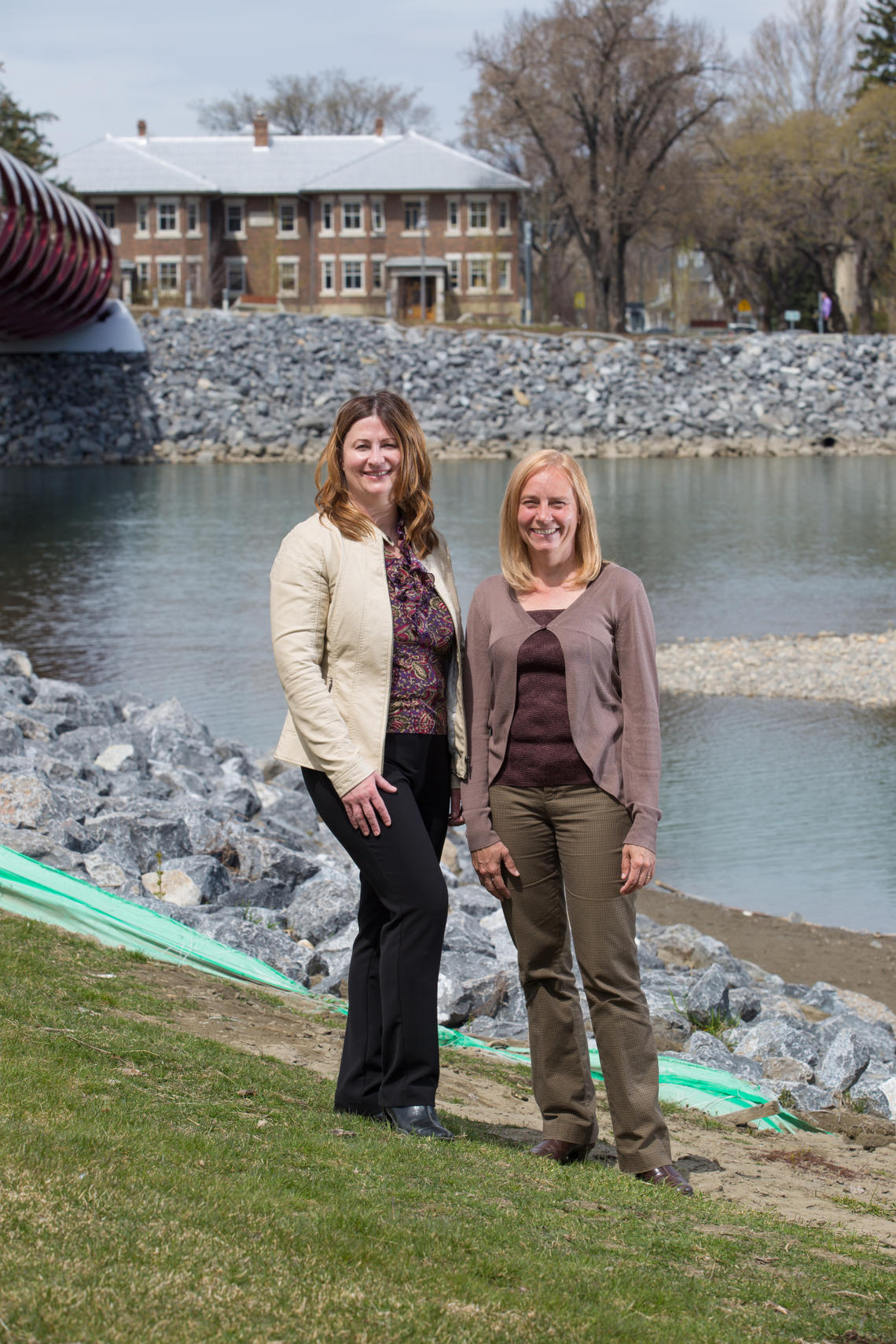
Tracey Moll and Faye Bres are working together to study lessons learned from the flood of 2013.
Riley Brandt, University of Calgary
May 16, 2014

Tracey Moll and Faye Bres are working together to study lessons learned from the flood of 2013.
Riley Brandt, University of Calgary
Now that spring is here, thoughts are turning to the greening of the grass, the blooming of the flowers and trees…and the melt of the snowpack to the west of us.
Spring flooding is a reality in Calgary, and it was never more apparent than last year, when floodwaters tore through the city and surrounding area, damaging hundreds of homes and businesses and leaving a path of devastation in their wake.
Once the waters receded, there was time to analyze The City of Calgary’s preparedness and response to this type of natural disaster, and it was at this point that one Werklund School of Education doctoral student recognized an incredible opportunity the flood of 2013 presented.
“The flood was a terrible disaster, but I think all of us were aware that even in the midst of that crisis, some very cool things were happening,” says Faye Bres, who is studying toward her PhD in Educational Leadership. “The people of Calgary really came together — we were innovative and collaborative.
“It was a redefining moment for the city as a collective.”
Researching how organizations learn in chaos
Bres, who worked as an environmental management consultant prior to returning to graduate school, is conducting research that looks at how organizations learn, and how that learning can help organizations adapt to changes in the environment.
“The flood provided a classic example of emergence, of self-organization, in a complex system in a state of disequilibrium. I see this as the way that organizations learn. And interestingly, the intensity of the interaction between the city and the environment was absolutely central.”
Bres watched what happened during the first days of the flood last June from an organizational standpoint. “During the chaotic conditions of the flood, city workers, members of the public and other stakeholders organized their interactions in creative new ways, supplementing established control processes that were pushed to the limit.”
Her observations about the manner in which decisions were made and actions were taken — and by whom — made her realize that her current academic research had real implications and applications for the organizational structure of The City of Calgary.
Partnering with Mitacs and The City of Calgary
Bres decided to tap into Mitacs, a Canadian not-for-profit organization that offers funding for internships and fellowships for graduate students in partnership with industry or community partners such as The City of Calgary.
She took her initial research proposal to the city as a rough draft, and worked with them to define a project that would serve both her needs and those of the city. Based on input, she prepared a Mitacs application, which required that she identify both the academic and practical aspects of the project. After the city signed on, Bres got the go-ahead from Mitacs.
“The study is looking at emergent, self-organized response that occurred as multiple stakeholders adapted to unprecedented conditions,” explains Bres. “I will be working with two models that are complementary, the top down and bottom up. The controlled processes are critical and were effective, but other processes also came into play.
“I will be working with both managers and operations staff at The City of Calgary, looking at how the city interacted with the environment during the flood,” she says. ”The research involves designing and testing an organizational tool to identify the learning that occurred as city employees and citizens and other stakeholders self-organized during that challenging time.”
'A collective learning event'
The project aims to identify potential new management processes and services for the Environmental and Safety Management (ESM) function, as supported by Tracey Moll, manager of Strategic Services in ESM. “We will be looking at how ESM can complement the existing EnviroSystem, which is top down, with adaptive management processes that are bottom up,” explains Moll.
“The project is not focused on emergency preparedness, but rather on how situations during the flood brought forth evidence of adaptive capacity that could be formalized to supplement environmental risk control with adaptation.”
Bres sums it up by saying, “The flood was an intense collective learning event. I hope that by studying the stories we can learn something of how Calgary can build its adaptive capacity for dealing with whatever environmental changes we may face in the future.”